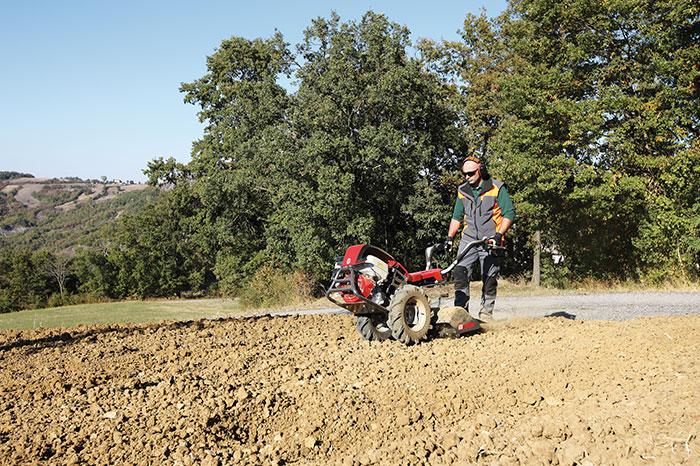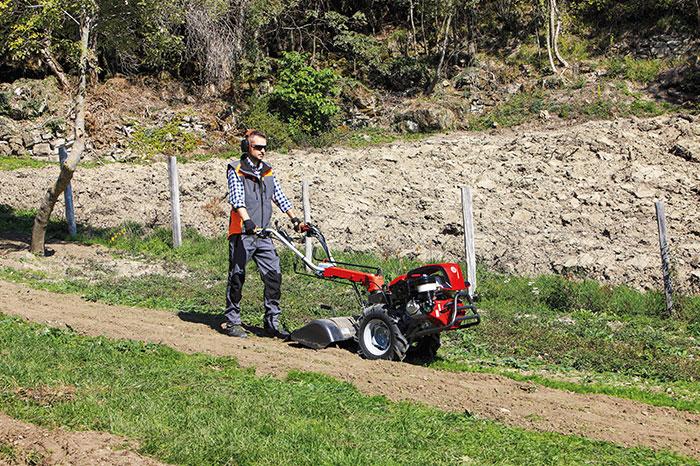Two wheel tractors: the future of farms

In recent years we often hear people say things like "the future is in the soil", "there is a gradual return to the land" and "young people are getting back into farming". These statements are very true and yet few people fully appreciate their significance, because to every good farmer or grower, soil is everything: much more than property, it is also a habitat for life.
Let's try to explain better. In the last 60 years we have increased our focus on preparing soil, while underestimating the vital contribution that nature itself provides to it. Our lands have adapted to new soil preparation techniques that we have introduced solely for the purpose of growing crops faster with less effort. Of course, these intentions are understandable and, from a certain point of view, completely acceptable, but with the passage of time we have turned fertile lands sterile and polluted aquifers with fertilisers or slurry to try and correct our previous actions, which destructured the soil. In short, we are at breaking point: continuing in this way is no longer environmentally sustainable, not even from an economic standpoint, because the soil requires too many inputs (fertilisers, pesticides, special cultivation processes) that yield ever diminishing returns. How can we resolve this situation? Must we abandon the techniques and machinery we have invented in recent years? Absolutely not. However, we must focus on education and the creation of machinery that can help both soil and people.
Let's take a practical example
Usually when we need to work soil to prepare it cultivation, we choose to use a tilling rotor. The rotor turns the soil over, breaks it up and creates a bed suitable for growing seedlings. However, if we look closely at what the rotor does, we realise that it only works the first 20-25 cm of soil effectively, whereas below this depth it creates a hardpan, formed by the contact of the rotor blades with the soil. This means that the top 20 cm of soil is suitable for the initial growth of seedlings, but below that the earth remains compact, preventing our crops from finding any water and nutrients beyond the topsoil. It goes without saying that the surface layer contains only limited nutrients. What’s more, in times of drought, water reserves tend to be located lower down. So, is the solution to dig deeper by returning to manual hoeing and abandoning all modern methods? Far from it!


Tools that can help us
There are tools that can solve this problem, such as a rotary harrow, which can be mounted onto a two wheel tractor. Whilst a tilling rotor works on the horizontal axis, a rotary harrow works on the vertical axis. Just like the rotary harrow, there are other two wheel tractor accessories that can help us work in the fields while preserving the soil. Another must-have implement for any farmer or market gardener is the rotary plough, which enables the best soil (the top 50 cm) to be easily displaced and formed into ridges ideal for any type of cultivation. Thanks to their compatibility with so many implements, two wheel tractors can do a powerful job in the same way as full-sized tractors, and are highly versatile. These are the reasons why we like to think of the two wheel tractor as the future of small farms.
Indeed, a two wheel tractor has a number of advantages over its four-wheeled counterparts: it is much cheaper, easier and less expensive to run, doesn’t need to be kept in large storehouses, consumes less fuel (benefiting bank accounts and the environment) and its manoeuvrability makes soil preparation a doddle, especially in small spaces. In terms of sustainability, soil health, cost savings and efficiency, two wheel tractors and their implements are the best choice for agricultural land owners with less than two hectares. Being such an important tool, it’s vital to choose a model that ticks all the boxes, such as the KAM 13 S.



